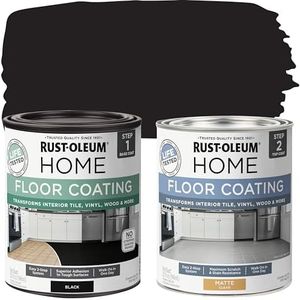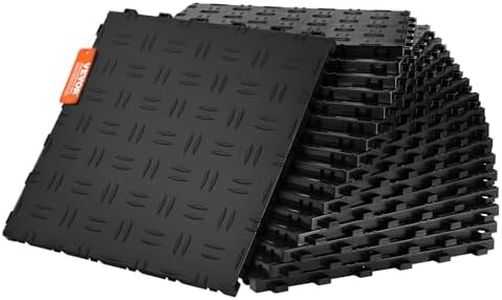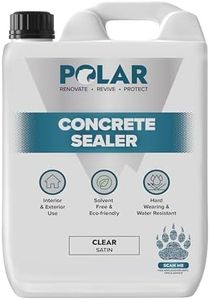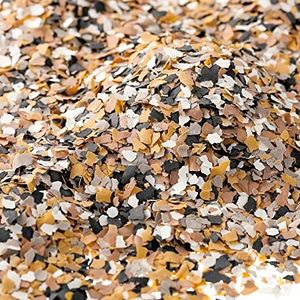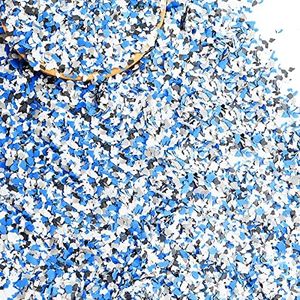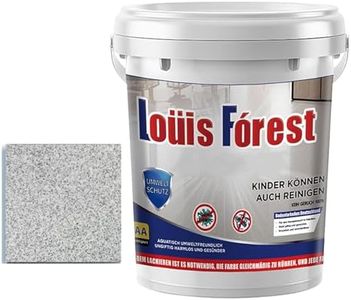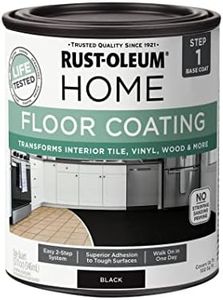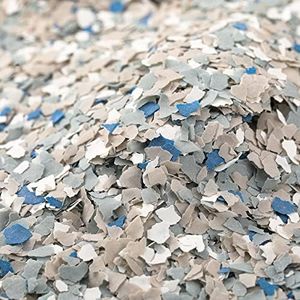We Use CookiesWe use cookies to enhance the security, performance,
functionality and for analytical and promotional activities. By continuing to browse this site you
are agreeing to our privacy policy
10 Best Garage Floor Coatings
From leading brands and best sellers available on the web.Buying Guide for the Best Garage Floor Coatings
Choosing the right garage floor coating can transform your space, making it not only look better but also last longer. The best coating for your garage floor depends on how you use the space, what kind of look you prefer, and how much time you want to spend on maintenance. It’s important to understand the basics of floor coatings so you can make a choice that suits your needs, whether you want to protect against oil spills, tire marks, or just want an easy-to-clean surface.Coating TypeThe coating type refers to the chemical makeup or base material of the garage floor covering, such as epoxy, polyurethane, acrylic, or polyaspartic. This is crucial because it determines how durable, visually appealing, and resistant your floor will be to things like stains, chemicals, and abrasions. Epoxy is very common for its toughness and glossy finish, making it good for most residential garages. Polyurethane offers good flexibility and UV resistance for spaces with lots of sunlight. Polyaspartic coatings cure quickly and can handle temperature changes well. If you only need a light, quick fix, acrylic might be suitable, although it’s not as durable. Always think about how much abuse your floor takes—heavy tools and car traffic need stronger coatings—when picking the right type.
ThicknessThickness describes the layer of coating, typically measured in mils (thousandths of an inch). Thicker coatings offer better protection against impacts, tire wear, or dropping tools. Garage floor coatings can range from thin sealers (under 10 mils) to thick industrial coverings (over 100 mils). For most home garages, a medium thickness (around 20–30 mils) is a sensible balance of protection and practicality. If your garage sees a lot of heavy-duty use or you want long-term peace of mind, a thicker coat is better. For light storage or occasional parking, thinner coatings can be enough.
Slip ResistanceSlip resistance refers to how well the coating prevents you from slipping, especially if the floor gets wet or oily. Some coatings can be quite slippery unless you add texture agents like sand or special flakes. If safety is a concern, especially due to water from cars or if kids play in the garage, look for products that allow or recommend adding texture. For mainly dry storage use, slip resistance is less crucial. Tailor this to your daily activities—active garages need more grip.
Chemical and Stain ResistanceThis spec indicates how well the coating protects against oil splashes, gasoline, brake fluids, and other chemicals common in garages. Good chemical resistance ensures that spills don't soak in or discolor the floor. Some coatings are specially formulated to resist a wide range of garage chemicals, while others may stain or degrade more easily. If you use your garage for projects or car maintenance, prioritize a high resistance level. If it's just for parking or storage, moderate resistance might be sufficient.
Cure Time and Ease of ApplicationCure time means how long the coating takes to set and become usable, which ranges from a few hours to several days. Ease of application covers whether you can do it yourself, if you need special tools, or if professional help is required. Fast-curing coatings are useful if you need your garage back quickly, but sometimes require quicker and more precise work. Easier, slower-setting systems allow more time to spread and correct mistakes but mean your garage is out of use longer. If you’re handy and have time, DIY-friendly choices are suitable. For busy schedules or large spaces, consider quicker-curing or professionally applied options.
UV StabilityUV stability means how well the coating holds up under sunlight without turning yellow or degrading. If your garage has lots of windows or the door stays open, UV rays could affect the floor. UV-stable coatings are important for garages exposed to sunlight, as they maintain their color and strength. If your garage is always shaded, this spec is less vital.
Appearance and Finish OptionsThis refers to the color, gloss level, and decorative chips or textures you can add to your coating. Some prefer a glossy showroom finish, while others like matte, more subtle looks. Decorative flakes can hide dirt and add slip resistance. Choose a finish that matches your style and how much you care about visible stains or scuffs. For less maintenance and hiding dirt, look at speckled or textured finishes. If aesthetics are your main concern, there are bright colors and high-gloss choices, too.
